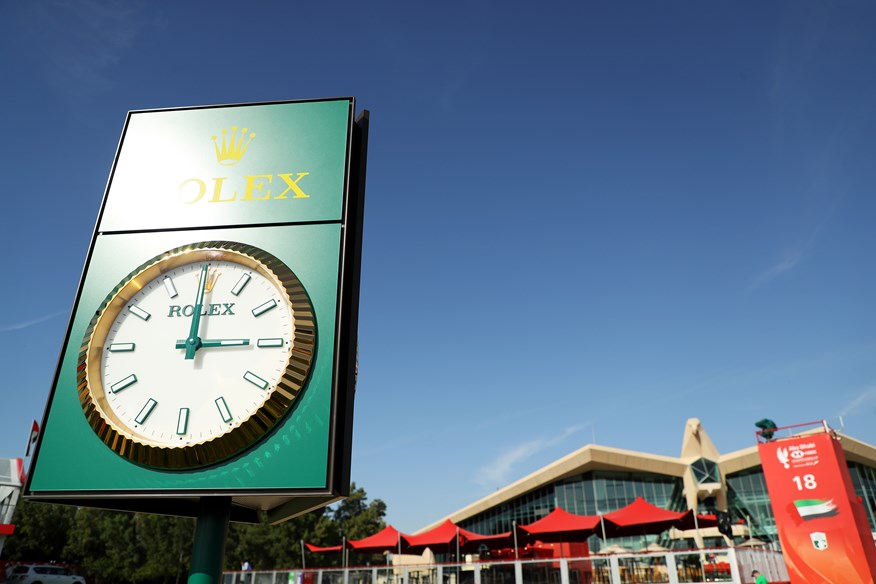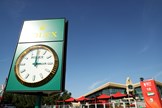European Tour’s new slow play regulations come in to effect this week
Published:
The European Tour’s efforts to crack down on slow play are to accelerate this week as their new regulations come in to effect in Abu Dhabi
The European Tour’s new tougher regulations aimed at tackling slow play come into effect at this week’s Abu Dhabi HSBC Championship presented by EGA, including a key revision to the four-point plan previously announced in August.
Players will be now be given an immediate one shot penalty for two ‘bad times’ in a tournament rather than for two ‘bad times’ within a round.
It means additional powers for referees to target slower players starting at this week’s Rolex Series event at Abu Dhabi Golf Club.
A reduction in the time allowance for ‘in-position players’ to play shots also comes into force this week, alongside increased fines for players who are regularly placed ‘on the clock’ throughout the season. European Tour players have also been required to undertake an education programme since the four-point plan was announced last year.
John Paramor, European Tour Chief Referee, said: “The tougher measures which come into effect in Abu Dhabi empower our referees to more effectively target slower players.
“Changing the regulation for an immediate one shot penalty to now be triggered by two bad times in a tournament instead of a round will force slower players to consistently ensure they play within timing regulations.
“This is part of our wider, robust policy to tackle slow play but our fundamental advice to all players remains consistent – they should be ready to play when it is their turn.”
The European Tour’s four-point plan, announced in August, continues to put the European Tour at the forefront of pace of play management in the professional game and was introduced following a mandate from the Tournament Committee to take firmer action against slower players. It focuses on four key areas: regulation, education, innovation and field sizes.
A new ‘Pace of Play’ timing system utilising the latest technology was tested at the BMW PGA Championship in September, with a further trial taking place in Abu Dhabi this week.
The intention is to roll the system out across a number of events in 2020, providing referees with the precise times for every group through every hole to make sure that no gaps are missed.
On-tee displays linked to the system will also provide the players instantaneous information on their position in relation to the group in front.
Field sizes at fully sanctioned events will be reduced from 156 to a minimum of 144 so long as all entered players in Category 18 (the final 116-132 on the 2019 Race to Dubai) and above make it into the event. This will create space for referees to push groups over the Thursday and Friday rounds, while larger starting intervals will be built into play on Saturday and Sunday to create a better flow between groups.
KEY CHANGES TO PACE OF PLAY POLICY COMING INTO EFFECT IN ABU DHABI
➤ An immediate one stroke penalty (which was announced in August as being applicable to a second “bad time” in a round), will now be applied on the second “bad time” in a tournament.
➤ Players who exceed time limits (see below) whilst being “monitored” will now incur a “bad time” and it will count towards the one stroke penalty.
➤ A player can call a “time extension” for any stroke ONCE in a round. This will add 40 seconds to the allowance for the stroke in question. If players wish to use this, they must make this clear to the timing referee BEFORE they exceed the allowance they have for the stroke in front of them. Referee’s advice is for this to be a verbal call or a clear signal which they will acknowledge.
➤ Referees have also been mandated by the Tournament Committee to focus on the players who are regularly taking too much time, even if they are ‘in-position’. The “in position” time limits have been reduced (see below). A breach of these “in position” limits will incur a “monitoring penalty” but they will NOT count towards the one stroke penalty in a tournament, recognising the significance of being “in position”. A single “monitoring penalty” or single “bad time” in a season will not result in any sanction, but each one after that will incur ever increasing fines starting at €3,500.
➤ The fines for the number of times players have been timed during the season have also been increased
OVERVIEW OF TIMING ALLOWANCES
Out of position
When players are out of position their time allowance is 50 seconds* for the first to play, 40 seconds* for second or third to play. A one-shot penalty will be applied after two bad times (exceeding the time allowance) in the tournament.
In Position
The time allowed to play a shot when being monitored in position (previously double the out of position times above), will be reduced by 15%, from 100 and 80 seconds down to 85 and 70 seconds respectively for first and second/ third to play. Referees are now mandated to be proactive in targeting regular slow players for in position timing.
*NB The existing principle of allowing an extra 10 per cent on the 40 and 50 second limits will be maintained by referees, recognising human differences can occur in starting timing. A player will be assessed a ‘bad time’ if he has a third time in this 10 per cent allowance.

